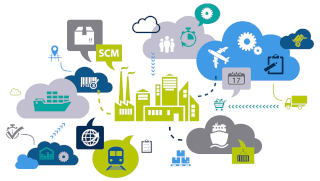
Supply Chain is one of the world’s oldest areas of focus. We may not have formal names or even formal methodologies for the best Supply Chain practices, however, for as long as trade has existed, we recognize the value in exchanging commodities in the most efficient matter.
Historically, it is quite obvious that technology contributes immensely to the evolution of Supply Chain. For example, if we take a look at pencils as our product to supply back in the year 1700, it was not even conceivable for consumers to purchase pencils simply because there are several components that must come together to even create the pencil, including wood, rubber, metal, and led. As such, several suppliers are required in order for a pencil manufacturer to even create a pencil. Additionally, the manufacturer would need to mass produce pencils to attract suppliers and then furnish their supplies in sufficient quantities to either wholesalers or retailers to keep business moving and thriving. This seemingly simple supply chain actually involves several layers of communication (without phones or email?), transportation (without motor vehicles?), record keeping of documentation (without computers?) and invoicing which would make a pencil virtually impossible to produce let alone affordable for consumers.
Flash forward to today, in order to further understand how Blockchain plays a critical role in advancing this industry to another level, let’s discuss a key element and a challenge that we face in today’s Supply Chain.
In this example, a buyer places an order with their supplier. Both the buyer and seller will need to finalize a purchase order. There may be a series of email communications and revisions to the purchase order before the parties finalize. A notification, once approved, maybe generated, and shipping instructions will be presented to a 3rd party shipper. The shipper will prepare and attach a Bill of Lading and invoice details to either the Sellers or Buyers account. A series of communication will exist between the shipper and buyer/seller which will likely result in another series of communications / document sharing for the approval of all parties.
Once shipment is made and received, a series of invoices from these multiple parties (Buyer, Supplier, Seller, Shipper) all having different contracts, payment terms, volume-based discounts, quality control standards etc… will need to be addressed. At this point each company will need to review their documentation to make sure that the transaction being invoiced is accurate. The caveat here is that each business now needs to reconcile not only their own numbers/process/quality control/terms/discounts but also verify the documentation being used to align the transactions is the most up to date or, there will be discrepancies between parties.
The key take-away from this example lies within standardizing a process and documentation management. Standardizing business processes between business’s is a natural challenge due to a lack of transparency. Furthermore, the practice of internally storing business documents, limiting access to their employees only, proves that a solution for standardizing a process of transparency and documentation management is essential. These issues cost organizations time and ultimately require more man power to ensure proper services.
How Does Blockchain Help?
Blockchain technology is a decentralized ledger which hosts information validated through a built-in consensus mechanism. This technology allows information to remain visible to any party that has the appropriate permissions to access and un-encrypt it. At the same time there is no distrusted 3rd parties in charge of validating information. This allows business to record transactions in a ledger they each have access to without relying on one another to ensure the safety and trustworthiness of the information; the inherent reason that each business stores their own copies of files internally. As a result, industry’s now have the ability to create business processes which can be tracked and traced by parameters including, but not limited to: user, date, and time. Likewise, businesses can utilize blockchain technology for documentation management (bills of lading, invoices, purchase orders, commercial agreements etc…) by creating records (transactions) for every time a file is updated or created. Document management is essential to the Supply Chain as it allows all permissioned parties the ability to save time by always maintaining the most updated and appropriate documentation available. Having this decentralized ledger for storing actions and transactions in a trustless encrypted manner within each organization allows for transparency within the Supply Chain. This is just the beginning, as our world is just learning how to recognize blockchains immense value.
